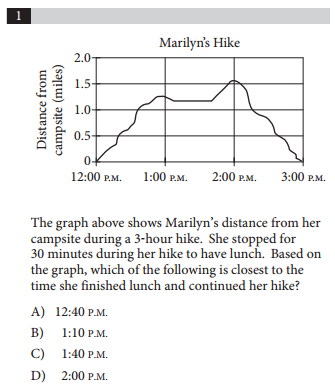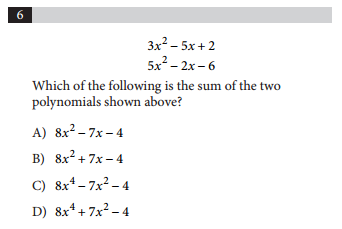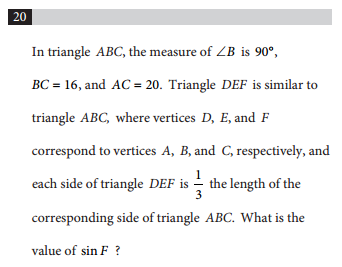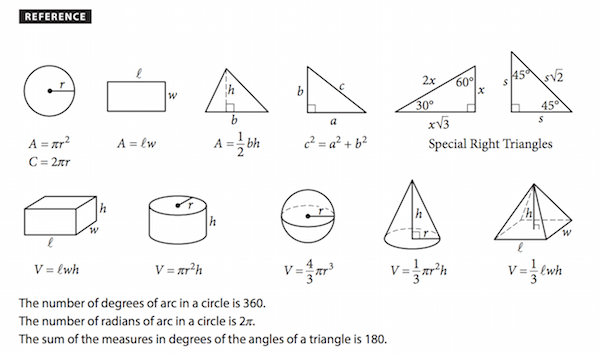Menu
All the basics about the SAT: what is tested and how to do well
Whether you're actively preparing for the SAT or simply want to learn more about the ubiquitous college entrance exam, it’s important you start with the basics: how many sections are on the SAT? What are the names of the SAT sections? And what kinds of skills does each section measure?
What Are the SAT Sections?
The SAT (which was redesigned in 2016) consists of four sections:
- Reading
- Writing and Language
- Math (which consists of two subsections, No Calculator and Calculator)
As the College Board (the creator of the SAT) puts it, all sections of the SAT work together to test “what you learn in high school” and “what you need to succeed in college.” In other words, the goal of the SAT is to ensure you possess the appropriate reading, writing, and math skills deemed necessary for success as a college student. Each of the SAT test sections appears only once on the exam and varies in the number of questions it contains as well as in how much time it allocates. The following table showcases some of the major features of the SAT test sections:
スクロールできます
| Reading | Writing and Language | Math | |
|---|---|---|---|
| Order on the test | 1st | 2nd | 3rd |
| Number of questions | 52 | 44 | 58 (20 Non-calculator and 38 Calculator ) |
| Format of questions | Multiple choice only | Multiple choice only | Multiple choice and grid-in |
| Time | 65 minutes | 35 minutes | 80 minutes (25 Non-calculator and 55 Calculator) |
| Skills tested | ・Comprehension ・Command of evidence ・Vocabulary in context | ・Command of Evidence ・Words in Context ・Expression of Ideas ・Standard English Conventions | ・Heart of Algebra ・Problem Solving and Data Analysis ・Passport to Advanced Math ・Additional Topics in Math |
| Scoring | Combined with Writing and Language for a total Evidence-Based Reading and Writing (EBRW) score on a scale of 200-800 | Combined with Reading for a total Evidence-Based Reading and Writing (EBRW) score on a scale of 200-800 | No Calculator and Calculator subsections are combined for a total Math score on a scale of 200-800 |
According to this table, the longest section (in terms of both time and number of questions) is the Math section. This is because the Math section is composed of two subsections: a No Calculator section (which always comes first) and a Calculator section. While the No Calculator section is fairly brief at only 25 minutes and 20 questions long, the Calculator section lasts for 55 minutes and contains a total of 38 questions. You may also notice a few key similarities between the Reading and Writing and Language sections. These two sections were specifically designed to test a couple of the same skills — namely Command of Evidence and Words in Context — in different ways. The two sections also combine for an overall Evidence-Based Reading and Writing (EBRW) score out of 800 points, so they clearly have a lot in common with each other! Lastly, the above table highlights how all sections of the SAT are predominantly multiple choice. Most questions on the SAT contain four answer choices from which you must select one answer. On the Math section, however, you will also face a handful of grid-in questions for which you must come up with your own answers and bubble them in using the numbers provided. Now let’s take a closer look at each of the four sections of the SAT.
The SAT Reading Section
The Reading section focuses on reading comprehension and understanding vocabulary in context. Each of the 52 questions in this section will be based on a passage or two in case of paired passages. You'll be given five passages in total:
- passage on U.S. or world literature (fiction)
- passages on history/social studies (non-fiction)
- passages on science (which may include tables, graphs and/or charts)
In some areas of the Reading section, you may be given a pair of related passages instead of a single passage. You may also encounter graphs, charts, or other forms of data representation. (Note that you will not have to use any math for these questions, though you will be expected to know how to interpret the data provided.) As illuminated in the table above, the Reading section test two primary skills: Command of Evidence: your ability to find concrete evidence within the passage to support the author’s claims or answers to specific questions Words in Context: your ability to decipher the meanings of vocabulary words within the context of the passage, and your ability to understand how word choice influences the style and tone of a text As you take the Reading section of the SAT, you'll answer the following patterns of Reading questions:
- Big Picture
- Little Picture
- Inference
- Vocabulary in Context
- Purpose or function
- Author Technique
- Evidence Support
- Data Interpretation Graphics
- Rhetorical Strategy
- Passage Organization
- Tone and attitude
- Strengthening and weakening claims
- Analogy
- Paired passages
For the best strategies that cover in-depth all of the above question patterns, sign up for the MASTER KEY SAT BOOTCAMP. However, if you can’t for some reason, below are some useful tips for doing well on the SAT Reading section.
These two Reading question patterns are opposites: Big Picture questions focus on the main point of a passage, whereas Little Picture (or Function) questions focus on the function of specific lines or sentences within a passage. Your job, then, is to use contextual evidence to decipher either the author’s overall message or the function of a selected area of the text.
Top 3 SAT Reading Tips
Once you've familiarized yourself with all of the Reading question patterns, it's time for you to employ the below top three tips for the SAT Reading section!
Because the Reading section revolves solely around passages, it's critical you dedicate the bulk of your SAT Reading prep to working with SAT-esque passages. The best resources, repeat the BEST resources, for passages similar to those you’ll encounter on the SAT are OFFICIAL SAT practice tests. These mock SAT tests created by the College Board offer a plethora of realistic Reading passages that closely mimic the style and form of the passages you'll be given on test day. Finally, it's a smart idea to read real-life texts, such as The New York Times, The Atlantic, and Psychology Today, from which SAT passages are often borrowed. This way you can familiarize yourself with the type of materials you'll see on test day.
The SAT Writing and Language Section
The Writing and Language section (often referred to as simply the “Writing section”) may look similar to the Reading section, but instead of measuring your reading comprehension skills, this section measures your ability to identify and correct grammatical errors and stylistic weaknesses within passages. In other words, the Writing section is all about your proofreading and editing skills! Like the Reading section, the Writing section revolves entirely around passages. These passages cover a wide array of topics, including careers, history/social studies, science, and the humanities. Unlike Reading passages, however, all Writing passages are nonfiction, taking the form of narratives, arguments, and explanatory texts. Your primary mission on the Writing section is to correct (or leave as is, if no errors are present) words and sentences within these passages. For science-based passages containing charts or graphs, you may be asked to replace an incorrect sentence with a new sentence that more accurately reflects the data provided. The Writing and Language section measures the following skills:
- Command of Evidence
- Words in Context
- Expression of Ideas
- Standard English Grammar Conventions
SAT Writing and Language Question Patterns
These types of Writing questions focus primarily on the big picture of a passage and usually ask you to provide evidence for why you are making a particular change. (No translation of the example below)
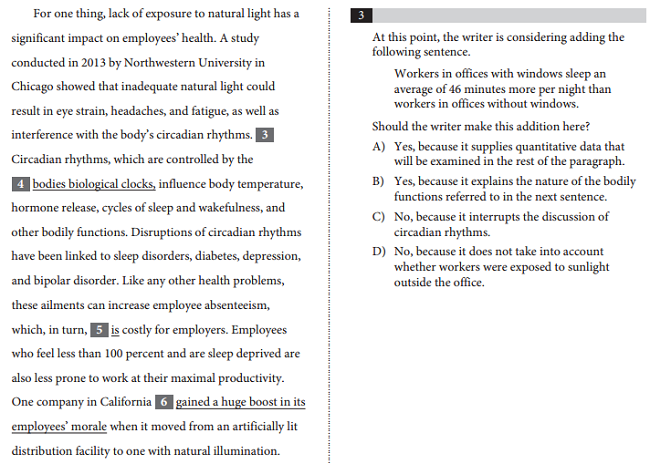
Top 3 SAT Writing and Language Tips
Nearly half of all SAT Writing questions focus on standard English conventions, so naturally you can’t expect to do well on SAT Writing if you haven’t mastered the basic rules of English grammar and usage! This doesn't mean you must review every single grammar rule in existence — just the ones most commonly tested on the SAT. In the MASTER KEY SAT BOOTCAMP, Vo-sensei will teach you all these rules. So no more worries!
The SAT Math Section
Onto the world of numbers! Unlike the English-centered Reading and Writing sections, the SAT Math section consists of practical, real-world math and measures the problem-solving abilities most useful for college-level coursework and future employment. The Math section comprises two subsections:
- Math No Calculator, for which you are not permitted to use a calculator
- Math Calculator, for which you may (but aren’t required to) use a calculator
The Math section is the only section on the SAT to contain a non-multiple-choice question format called the grid-in. 22 percent of Math questions are grid-ins, so although it’s not the main question format on SAT Math, it’s crucial you understand how it works. The Math section tests you on the following concepts:
- Heart of Algebra
- Problem Solving and Data Analysis
- Passport to Advanced Math
- Additional Topics in Math
SAT Math Question Patterns
This content area constitutes the largest focus of the SAT Math section, accounting for approximately one-third of all Math questions. Heart of Algebra questions focus on (you guessed it!) algebra — primarily linear equations, systems of equations, inequalities, and absolute values. (no translation of the example below)
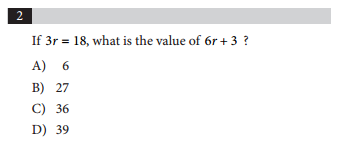
Top 3 SAT Math Tips
You can’t expect to score highly on the Math section if you’re not familiar with most or all of the basic math concepts being tested on the SAT. To get started, review critical math concepts you should know for the SAT, including algebra, arithmetics, imaginary number, coordinate geometry, and plane and solid geometry.
参考資料 25 Colleges With the Highest SAT Scores (U.S. News)
スクロールできます
| School | Average SAT score | U.S. News Rank |
|---|---|---|
| University of Chicago | 1535 | 6 (tie), National Universities |
| Massachusetts Institute of Technology | 1532 | 4 (tie), National Universities |
| Harvey Mudd College | 1520 | 25 (tie), National Liberal Arts Colleges |
| Harvard University | 1510 | 2, National Universities |
| Washington University in St. Louis | 1509 | 16 (tie), National Universities |
| Yale University | 1502 | 4 (tie), National Universities |
| Princeton University | 1501 | 1, National Universities |
| University of Pennsylvania | 1494 | 8, National Universities |
| Carnegie Mellon University | 1491 | 26 (tie), National Universities |
| Stanford University | 1488 | 6 (tie), National Universities |
| Brown University | 1488 | 14 (tie), National Universities |
| Dartmouth College | 1486 | 13, National Universities |
| Northwestern University | 1481 | 9 (tie), National Universities |
| Amherst College | 1477 | 2, National Liberal Arts Colleges |
| Williams College | 1473 | 1, National Liberal Arts Colleges |
| Haverford College | 1470 | 15 (tie), National Liberal Arts Colleges |
| Cornell University | 1467 | 18, National Universities |
| Pomona College | 1460 | 4 (tie), National Liberal Arts Colleges |
| Northeastern University | 1455 | 49 (tie), National Universities |
| Tufts University | 1455 | 30 (tie), National Universities |
| Swarthmore College | 1452 | 3, National Liberal Arts Colleges |
| Mount Holyoke College | 1448 | 34 (tie), National Liberal Arts Colleges |
| Georgetown University | 1446 | 23, National Universities |
| Emory University | 1442 | 21, National Universities |
| Hamilton College | 1441 | 9 (tie), National Liberal Arts Colleges |



